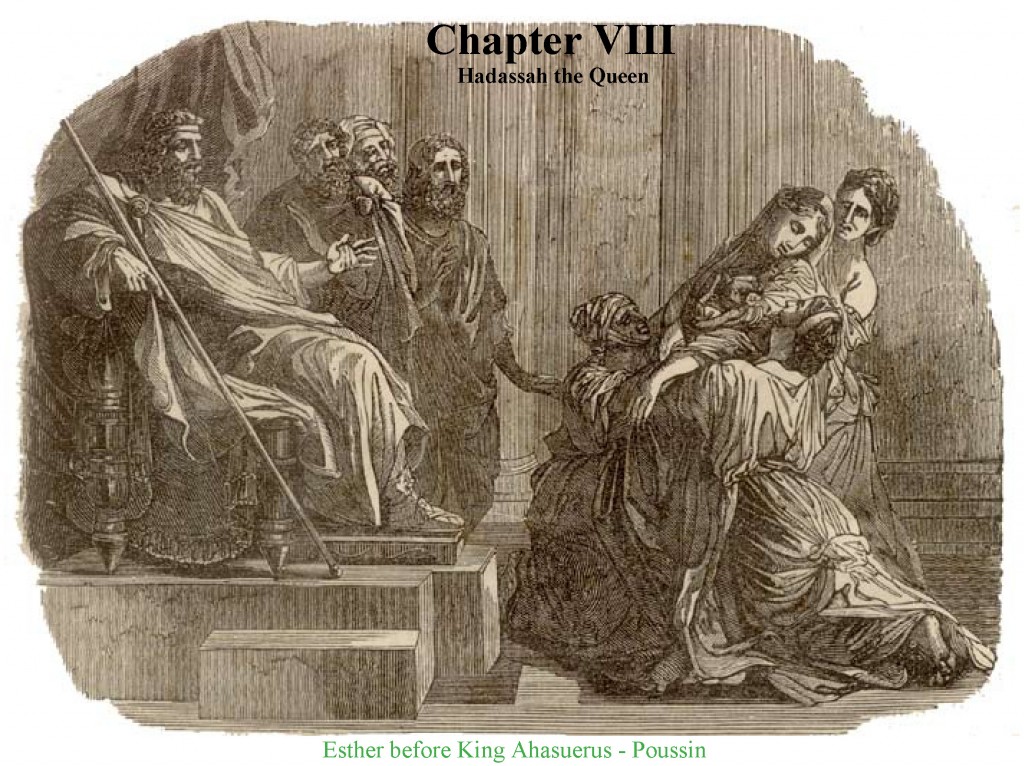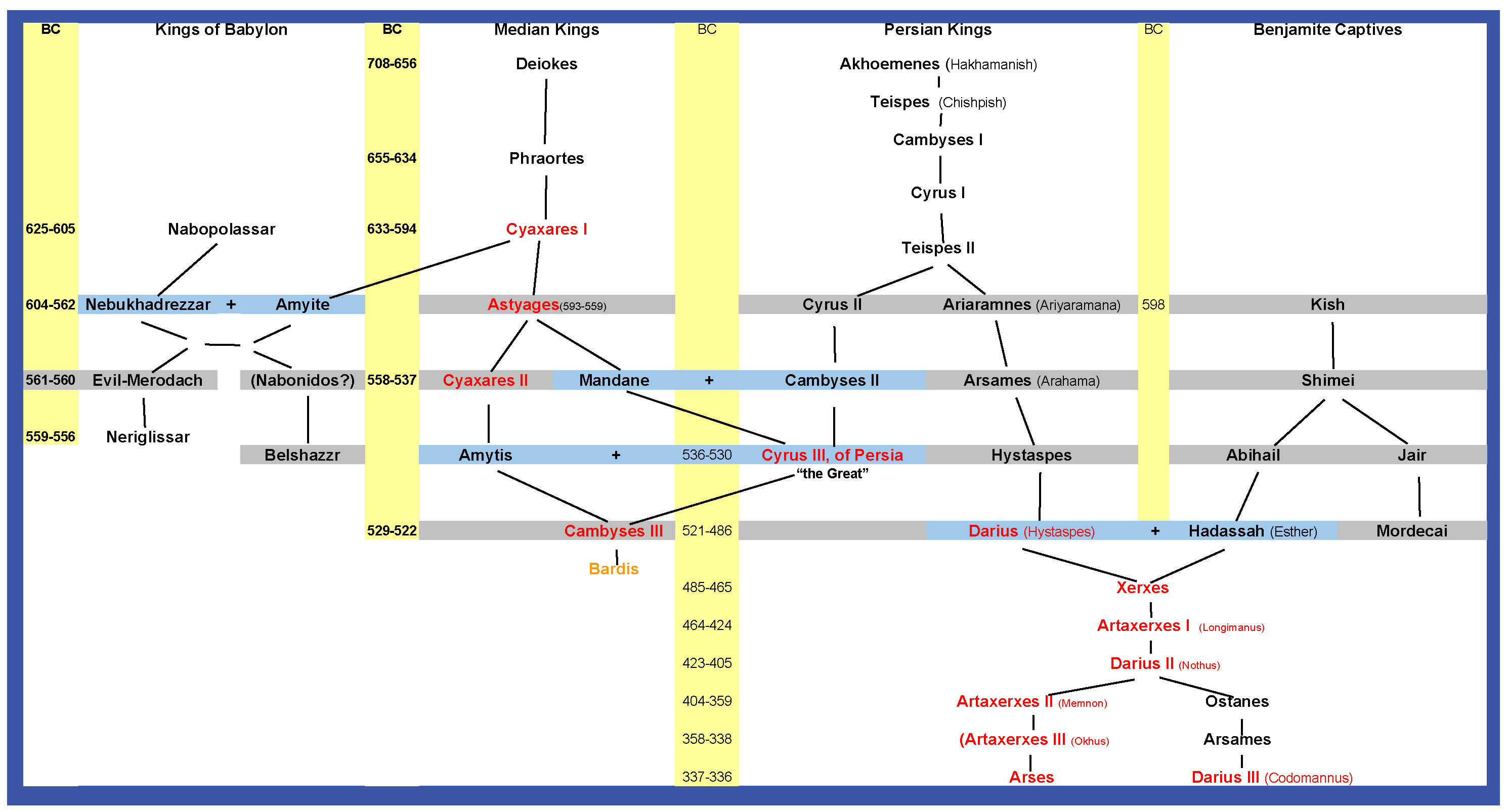Most are familiar with the story of the Jewish Queen Esther and the events which resulted in the celebration of Purim. (For more on this see my article April Fools.) Since Purim is coming up, I thought I would explore the history of that era a little in the next couple of articles.
Purim is a wonderful story of sacrifice, courage, and duty. One woman’s courage changed the course of history regarding a race of people. She was so revered in Jewish history that the great Rabbi Maimonides said concerning her: “in Messiah’s days the prophets and hagiographa shall pass away, except ‘Esther’, which will remain with the Pentateuch.” What many may not realize is that there is more to this great story. A close inspection of Biblical and historical records reveals little known facts which offer valuable insights into this important time for the Jewish and Persian peoples.
At the height of the Persian power and influence, Darius the Great ruled over 127 provinces. He was the son of Hystaspes and the third king of the Achaemenid Empire. His revolutionary tribute system, which allowed goods in lieu of gold and silver, earned him the title of “huckster” from the historian Herodotus.
In the Old Testament, it was during the reign of Darius the Great that the second temple was completed. In his second year, he gave permission to the Jewish repatriates to build their holy temple. By Darius’s sixth year the 2nd temple was completed and in the spring of the following year it was dedicated. His generous support in the building efforts, as described in Ezra 6:8-9, confirms in part the estimation of Herodotus. Notice in the passage below, he commands the Jewish people be given, “of the tribute beyond the river……bullocks, and rams, and lambs,…wheat, salt, wine and oil.”
KJVEzra 6:8-9
8 Moreover I make a decree what ye shall do to the elders of these Jews for the building of this house of God: that of the king’s goods, even of the tribute beyond the river, forthwith expenses be given unto these men, that they be not hindered. 9 And that which they have need of, both young bullocks, and rams, and lambs, for the burnt offerings of the God of heaven, wheat, salt, wine, and oil, according to the appointment of the priests which are at Jerusalem, let it be given them day by day without fail:
Historically, Darius son of Hystaspes is known by the titles of Ahasuerus, Darius, and Artaxerxes.
Josephus speaks of him as Darius:
Antiquities of the Jews 11:33
Now, in the first year of the king’s reign, Darius feasted those who were about him, and those born in his house, with the rulers of the Medes, and princes of the Persians, and the toparches of India and Ethiopia, and the generals of the armies, of his hundred and twenty-seven provinces.
The Apocryphal book of 1 Esdras 3:1 also acknowledges him as Darius:
1 Esdras 3:1
Now when Darius reigned, he made a great feast unto all his subjects, and unto all his household, and unto all the princes of Media and Persia, 2 And to all the governors and captains and lieutenants that were under him, from India unto Ethiopia, of an hundred twenty and seven provinces.
The book of Esther calls the Persian king who ruled over 127 provinces by the name of Ahasuerus:
KJVEsther 1:1
Now it came to pass in the days of Ahasuerus, (this is Ahasuerus which reigned, from India even unto Ethiopia, over an hundred and seven and twenty provinces:)
The LXE version of Esther calls him Artaxerxes as does the Greek version Ester 11:1-2 and 16:1
LXE Esther 1:1
In the second year of the reign of Artaxerxes the great king, on the first day of Nisan, Mardochaeus the son of Jairus, the son of Semeias, the son of Chisaeus, of the tribe of Benjamin, a Jew dwelling in the city Susa, a grat great man, serving in the king’s palace, saw a vision. Now he was of the captivity which Nabuchodonosor king of Babylon had carried captive from Jerusalem, with Jechonias the king of Judea.
Ester (Greek) 11:1-2
In the fourth year of the reign of Ptolemeus and Cleopatra, Dositheus, who said he was a priest and Levite, and Ptolemeus his son, brought this epistle of Phurim, which they said was the same, and that Lysimachus the son of Ptolemeus, that was in Jerusalem, had interpreted it. 2 In the second year of the reign of Artexerxes the great, in the first day of the month Nisan, Mardocheus the son of Jairus, the son of Semei, the son of Cisai, of the tribe of Benjamin, had a dream;
Ester (Greek) 16:1
The great king Artexerxes unto the princes and governors of an hundred and seven and twenty provinces from India unto Ethiopia, and unto all our faithful subjects, greeting.
The chronologist Ussher calls him Artaxerxes the Great, Ahasuerus or Darius.
Ussher, Anals of the World:
3484c AM, 4194 JP, 520 BC—
1015. “Mordecai, the Jew, in the Greek edition of Esther {Apc Est 11:1-12}, is said to have had a dream on the first day of the month of Nisan, in the second year of the reign of Artaxerxes the Great (or Ahasuerus or Darius, the son of Hystaspes), concerning a river signifying Esther and two dragons portending himself and Haman. {Apc Est 10:4-13}”
Louis Ginzberg in his compilation of Talmudic tradition called the Persian king who ruled over 127 provinces by the title of Ahasuerus.
Legends of the Jews XXII. Esther
The first part of the celebration was given over to the hundred and twenty-seven rulers of the hundred and twenty-seven provinces of his empire.
Last but not least, Ezra 6:14 identifies the Persian king who helped in building the temple as Darius – even – Artaxerxes king of Persia. (Please note the “waw” connected to Artaxerxes in Ezra 6:14 can be used as either a conjunction or a hendiadys. The context defines the usage. The context of Ezra 6 requires the “waw” be used as a hendiadys. i.e. two words with one meaning. For more on this see TWOT Hebrew lexicon 519.0)
KJVEzra 6:14-15
14 And the elders of the Jews builded, and they prospered through the prophesying of Haggai the prophet and Zechariah the son of Iddo. And they builded, and finished it, according to the commandment of the God of Israel, and according to the commandment of Cyrus, and Darius, [even] Artaxerxes king of Persia. 15 And this house was finished on the third day of the month Adar, which was in the sixth year of the reign of Darius the king.
In Part 2 of The Queen of Persia, I will look at the contemporaneous relationship between the Babylonians, Persians, Medians, and Judeans. This table is based upon an original work by Richard Edmund Tyrwhitt from his book “Esther and Ahasuerus” (1868). It provides additional context and insights into the intrigues and alliances of that era.
More Articles related to the prophecy of 70 Weeks and 2nd temple era chronology:
The “Artaxerxes” Assumption – The best kept secret of Old Testament chronology.
The Fifth Command – Why do prophecy teachers ignore it?
Ezra: Priest & Scribe – Part I – Defining “Artaxerxes” in the context of Ezra.
Ezra: Priest & Scribe – Part II – Ezra, Darius even “Artaxerxes”.
Nehemiah: The Governor– Nehemiah’s place in the 2nd temple chronology
Queen of Persia – Part I – Defining Esther is the context of the 2nd Temple era.
Queen of Persia – Part II – Defining Esther is the context of the 2nd Temple era.
A New Testament Cipher – The key to unlocking the prophecy of Daniel’s 70 Weeks.
Ezekiel’s 13th Month– Key to understanding Biblical “time” in the 2nd Temple era
6 milestones – Seventy Weeks – Defining the purpose of the Messiah within Daniel’s 70 “weeks”.
The Messiah Factors (Part I): Decoding 13 & 14 – Symbolism of the Messiah
The Messiah Factors (Part II): The Countdown – Proving Yeshua/Jesus is the Messiah promised in Daniel 9.






Pingback: Queen of Persia – Part II | The 13th Enumeration
Pingback: The “Artaxerxes” Assumption | The 13th Enumeration
Pingback: Ezra: Priest & Scribe – Part I | The 13th Enumeration
Pingback: The Fifth Command | The 13th Enumeration
Pingback: Ezra: Priest & Scribe – Part II | The 13th Enumeration
Fascinating! I love history. Thank you for tapping into the link between religion and history.
Glad to hear you enjoyed the article Erin. I love history as well. Thanks for taking the time to let me know you read the article.
Regards,
William Struse
Pingback: Nehemiah: The Governor | The 13th Enumeration
Pingback: A New Testament Cipher | The 13th Enumeration
Pingback: Ezekiel’s 13th Month | The 13th Enumeration
Pingback: Open Letter to Prophecy Teachers – RE: Daniel 9 | The 13th Enumeration
Pingback: The Messiah Factors (Part II): The Countdown | The 13th Enumeration
Hi Bill. ..I can’t remember ever enjoying a book more than 13th Enumeration book 1.
I tell everyone. .. it’s an amazing work. So very interesting. Fact filed. Exciting!
Keep up the Good Work
Thank you Sue. I really appreciate your kind words.
Warm regards,
Bill
Hiya William,
Sounds like you might be a Berean with those of us studying the Word with Dr. Chuck Missler; am I right? In any case, the Lord Blessya! Evelyn